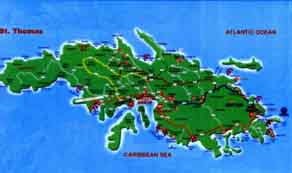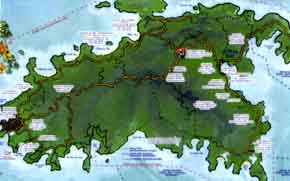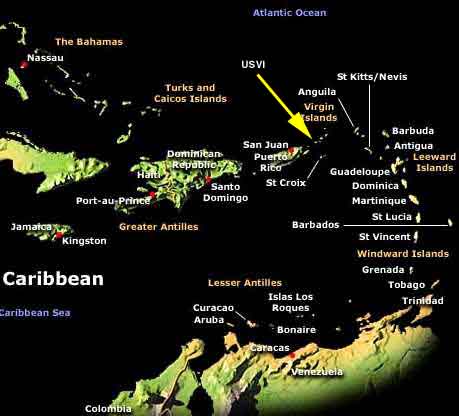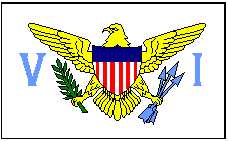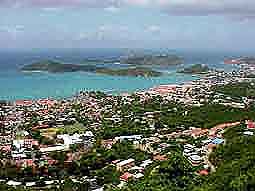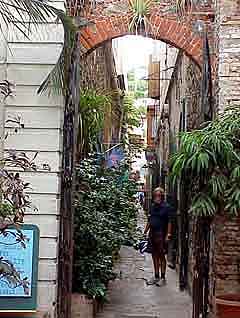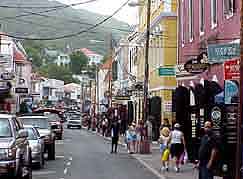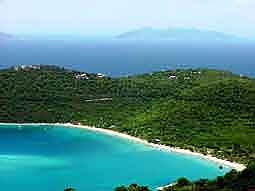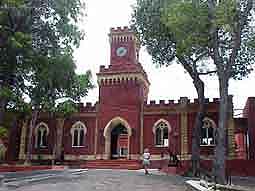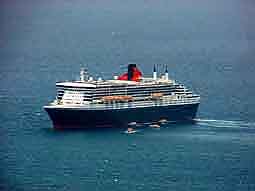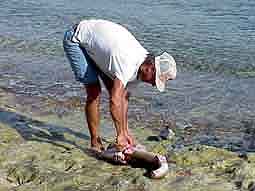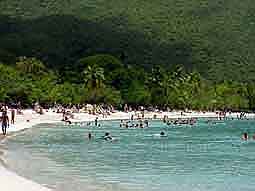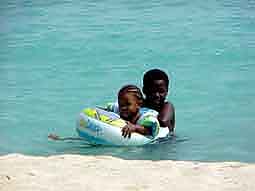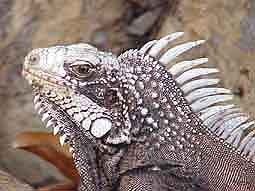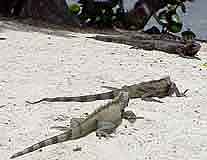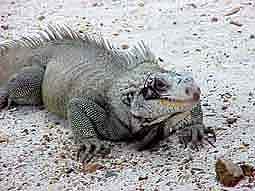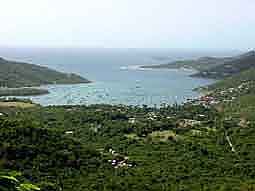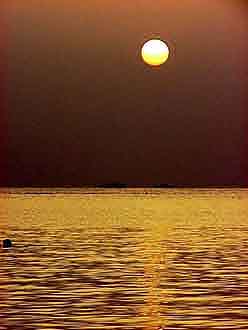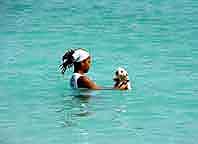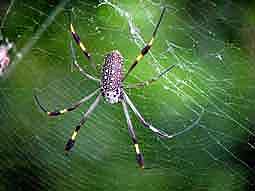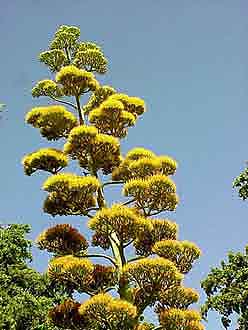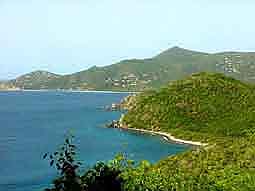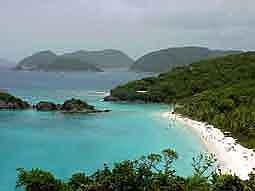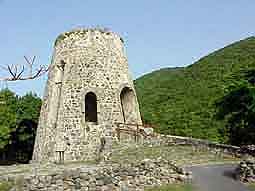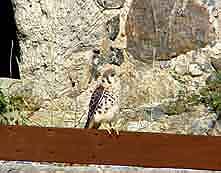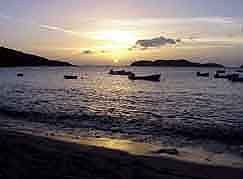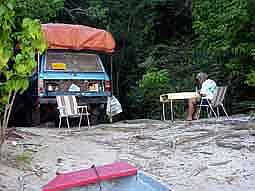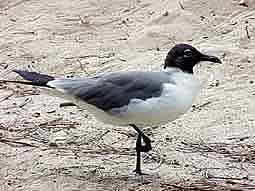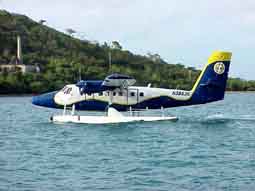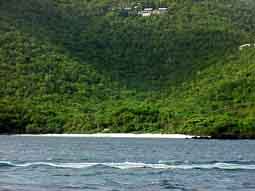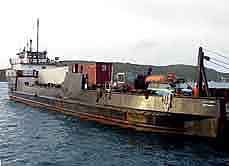![]()
Enjoy some pictures of the worldrecordtour, taken in the US Virgin Islands
St. Thomas Map
|
St. John Map |
Map of the Caribbean |
|
|
|
|
|
||
|
|
|
||
| US Virgin Islands -
"Our Islands - Our Home"
|
||||
|
|
|
||
| We were totally wrong in thinking that US rules are the same everywhere. The autonomous US Virgin Islands have again their own laws, different than on the mainland. Thus, also here some surprises pop up despite that we arranged the car's entry with the respective authorities. The first surprise is that we need a local license plate for our LandCruiser, connected to a massive road tax, which was generously waved. Until we get the license plates, it needs a lot of walking in the scorching tropical sun, as we are sent from one place to the other, from one end of town to the other. Taxis are very expensive and public transport, the nostalgic open-air safari vans, is not circulating regularly. It is the sixth time - besides Egypt, Libya, Trinidad, Grenada and St. Lucia - that we have to cover our Swiss plates.
|
||||
|
|
|
||
| In the meantime it becomes mid-afternoon and we head to the Customs Office. The lady Officer, Mrs. Pederson, is straightforward to tell us that we have to pay duty for the vehicle and its whole content; this is the law in the US Virgin Islands! A Mr. Brown, who seems to have a higher rank, reinforces this rule with a serious face: Without paying duty - no entry. They are trying now to find out the current value of our Toyota Landcruiser FJ60, year 1982, phone from one place to the other only with the result that their figures don't go further than 1984. And what's now? The two, Mrs. Pederson and Mr. Brown, decide that the best is to have a personal look at our car, which is still parked at the agent's compound of Sea Star Line only a few hundred yards away. They sit into their comfortable station wagon and drive away - we follow them by foot. The adventurous look of our LandCruiser with the new attractive band with the name of all the visited countries on it must have impressed them immensely. And after they find out that we also have been in Puerto Rico where - as we tell them - we did not have to pay neither duty nor a bond, their faces become visibly friendlier, their voices nearly warm. It does not take long and they tell us that they will put the tariff low - to US$ 107. Then, they sit into their car again and drive back to the customs house - we follow them again by foot. When we arrive, a new surprise is waiting for us, this time a nice one: The duty has been reduced to US$52 in the meantime - time and patience seems to work for us. Of course, we are very happy about it. The question of the road tax pops up again because we have no document to show that it has been waved. It is exactly the same Mr. Brown, who at the beginning insisted so much that we have to pay duty that did everything possible to solve the matter by phone so that we are able to leave the port still today. But the biggest surprise comes at the end: The whole duty fees are waved! How beautiful that now and then the human side is winning over bureaucracy - even at the very strict American Authorities.
|
||||
| Iguanas are a common sight on St. Thomas | ||||
| The first problem being solved, the second comes: Where are we going to camp? Meme, the managing director of Sea Star Line, wants to show us a nice spot. She drives with her car in front of us, but we are losing her out of sight a few times, because the roads are so steep and our "Oldtimer" is not having the same force anymore as in his youth. Finally, we arrive at Hull Bay Beach where we find secluded "camping spots" between bushes right on the beach. Regarding the security, we are a bit worried, as normally we never camp on beaches alone. But Meme reassures us that it is very safe here. She gives us the key to the Hull Hideway Beach Restaurant opposite the beach, which her husband Dan is running together with a partner, in order that we can use the shower and bathroom. Then, we are alone with the local fishermen and the water sport enthusiasts. The first night nothing happens, apart from some lovers who disturb us because our presence might have disturbed them. The second night our sleep is interrupted by noisy music from a neighboring car radio. And the third night, we already sleep on a quiet private property of an American/French couple, which invited us. We have now a nice spot with a beautiful view and running water. Sylvie and Marc offer us Internet access and their washing machine, and we often enjoy the visit of their lovely children Melia and Shan. What else do we need?
|
||||
| Coral Bay on St. John | A magic moment at sunset | The white poodle loves the water | ||
| St. Thomas is a jewel of the Caribbean. Nowhere else we have found the ever-changing colors of the calm water in the bays so intensive and the white of the beaches so gleaming. Nowhere else we have seen so many little islands and cays in the surrounding waters. Nowhere else were the views more spectacular, the roads steeper. One lookout, which attracts us again and again, is "Drake's Seat", named after Sir Francis Drake, the legendary English navigator and ruthless plunderer of Spanish Galleons. The legend says that from this seat, he was watching the foreign navies passing by, while his people hided in the protected waters of Magens Bay, which is said to be one of the most beautiful beaches of the whole Caribbean. But also the views of the picturesque town of Charlotte Amalie are spectacular. And when additionally two to three cruise ships are berthing in their brightness, it is exactly the perfect picture-book sight one expects from a Caribbean Island. As in 1959 Cuba closed its harbors for American travelers, they were diverted to the US Virgins and in the meantime, they have become one of the main destinations not only for American tourists.
|
||||
Spider in the jungle of St. John |
Blooming Aloe in St. John |
Coast of St. John with Tortola of the British Virgin Islands in the back |
||
| Since their discovery 1493 by Columbus, the US Virgin Islands have been ruled by seven nations: Spain, England, Holland, France, Knights of Malta, Denmark and now the United States, which bought them from Denmark in 1917 for US$ 25 millions to protect the Panama Canal. The capital Charlotte Amalie is still named after the Danish Queen. Where in earlier times trading houses were waiting for ships to arrive, now luxury jeweler and electronic shops line the streets. But what we like the best are the narrow quaint alleys in Spanish architecture with cafes, restaurants, bars and souvenir shops. But also the open safari taxis give a sense of nostalgia. Apart from these "specialties", there is something more we are very attracted to: The Iguanas, those mini dinosaurs, which are sun baking everywhere and measure often more than two feet. Mostly, they are not even shy. They live on the trees and are amazingly fast in descending if they discover something edible. They seem to have a preference for mangos and bananas.
|
||||
|
|
|
||
| On a cloudless day, in less than 40 minutes, we ferry over to the Island of St. John, the most untouched islands of the US Virgins, where 2/3 belong to the US Islands National Park Service, thanks Laurance Rockefeller. He bought this land and presented it 1956 as a gift to the National Park, in order "that these beauty of nature will be for ever a place to enjoy". We are indeed looking on a chain of unspoiled hills, covered with dense tropical vegetation, where at the bottom white, narrow and long beaches - one after the other - string along. What we prefer is the Northwestern coast from the capital Cruz Bay to Francis Bay; and the most beautiful bay is Trunk Bay for us. But also the historical places are interesting: Ruins of sugar mill towers are scattered all around in the forest. In earlier times, mules, horses or oxen operated them, later they were replaced by windmills. The ruin of Annaberg, an ancient Danish sugar cane plantation, is an impressive example of the hard work of the plantation workers, who were all African slaves. Everything was done manually: From planting the crops, cutting, stripping off the leaves, tying them into bundles, which were then placed on mules or carts and taken to the mill. The last step was the boiling house, where the cane juice was concentrated in big copper pots, then poured into flat wooden panels to cool and crystallize. In 100 lbs barrels, the finished sugar was shipped for sale. Originally, we wanted to spend at least two nights in St. John, but found that one full day was enough. Besides, as soon as dusk is arriving, sand flies and mosquitos are getting so aggressive and a plague that camping is becoming unbearable - showing also the negative side of pure nature! Therefore, as we see the ferry ready for departure to St. Thomas, we do not hesitate to board.
|
||||
|
|
|
||
| These Islands are compared with a beautiful woman, who captured the hearts and imaginations of travelers for centuries. Countries, kings, queens, discoverer, and pirates - all pursued her and wanted to possess her. We think of this beautiful declaration of love, as on June 22 at dawn, we climb up the steep island roads over the hills to the port of Charlotte Amalie, to say good-bye to St. Thomas.
|
||||
|
|
|
||
